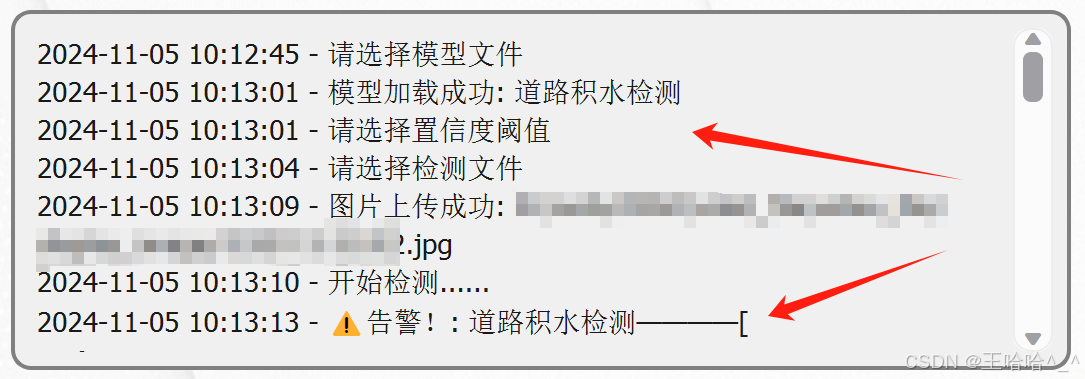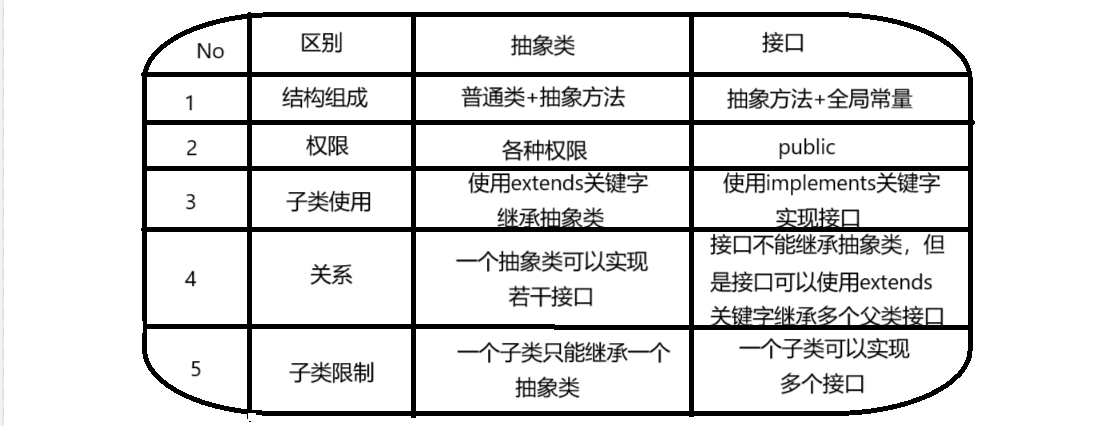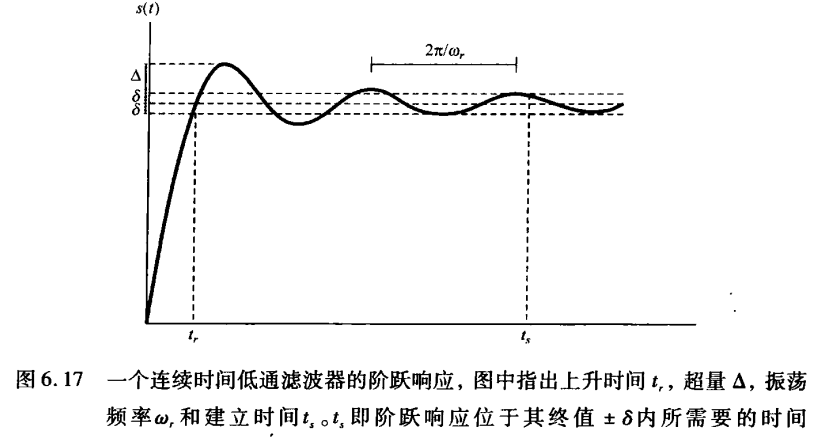多线程和线程同步复习
多线程和线程同步复习
- 进程线程区别
- 创建线程
- 线程退出
- 线程回收
- 全局写法
- 传参写法
- 线程分离
- 线程同步
- 同步方式
- 互斥锁
- 互斥锁进行线程同步
- 死锁
- 读写锁
- api细说
- 读写锁进行线程同步
- 条件变量
- 生产者消费者案例
- 问题解答
- 加强版生产者消费者
- 总结
- 信号量
- 信号量实现生产者消费者同步-->一个资源
- 信号量实现生产者消费者同步-->多个资源
进程线程区别
- 进程是资源分配的最小单位,线程是操作系统调度执行的最小单位。
- 进程有自己独立的地址空间, 多个线程共用同一个地址空间
- 线程更加节省系统资源, 效率不仅可以保持的, 而且能够更高
在一个地址空间中多个线程独享: 每个线程都有属于自己的栈区, 寄存器(内核中管理的)
在一个地址空间中多个线程共享: 代码段, 堆区, 全局数据区, 打开的文件(文件描述符表)都是线程共享的- 线程是程序的最小执行单位, 进程是操作系统中最小的资源分配单位
每个进程对应一个虚拟地址空间,一个进程只能抢一个CPU时间片
一个地址空间中可以划分出多个线程, 在有效的资源基础上, 能够抢更多的CPU时间片- CPU的调度和切换: 线程的上下文切换比进程要快的多
- 线程更加廉价, 启动速度更快, 退出也快, 对系统资源的冲击小。
创建线程
#include <stdio.h>
#include <stdlib.h>
#include <unistd.h>
#include <string.h>
#include <pthread.h>// 子线程的处理代码
void* working(void* arg)
{printf("我是子线程, 线程ID: %ld\n", pthread_self());for(int i=0; i<9; ++i){printf("child == i: = %d\n", i);}return NULL;
}int main()
{// 1. 创建一个子线程pthread_t tid;pthread_create(&tid, NULL, working, NULL);printf("子线程创建成功, 线程ID: %ld\n", tid);// 2. 子线程不会执行下边的代码, 主线程执行printf("我是主线程, 线程ID: %ld\n", pthread_self());for(int i=0; i<3; ++i){printf("i = %d\n", i);}// 休息, 休息一会儿...sleep(1);// >>>>>>>>>>>>>>>>>>>> 让主线程休息一会给子线程运行return 0;
}
子线程被创建出来之后需要抢cpu时间片, 抢不到就不能运行,如果主线程退出了, 虚拟地址空间就被释放了, 子线程就一并被销毁了。
这里的解决方案,让子线程执行完毕, 主线程再退出, 可以在主线程中添加挂起函数 sleep();

线程退出
子线程退出这个地址空间是存在的不影响主线程,这个线程退出函数实际上是服务于主线程的。这个函数作用是让主线程退出后子线程继续执行,而不回收这块虚拟地址空间,当子线程退出后这块虚拟地址空间就会被操作系统回收。
#include <stdio.h>
#include <stdlib.h>
#include <unistd.h>
#include <string.h>
#include <pthread.h>// 子线程的处理代码
void* working(void* arg)
{printf("我是子线程, 线程ID: %ld\n", pthread_self());for(int i=0; i<9; ++i){printf("child == i: = %d\n", i);}return NULL;
}int main()
{// 1. 创建一个子线程pthread_t tid;pthread_create(&tid, NULL, working, NULL);printf("子线程创建成功, 线程ID: %ld\n", tid);pthread_exit(NULL);return 0;
}

可以看出来主线程退出后是不影响子线程的执行
线程回收
#include <pthread.h>
// 这是一个阻塞函数, 子线程在运行这个函数就阻塞
// 子线程退出, 函数解除阻塞, 回收对应的子线程资源, 类似于回收进程使用的函数 wait()
int pthread_join(pthread_t thread, void **retval);
全局写法
#include <stdio.h>
#include <stdlib.h>
#include <unistd.h>
#include <string.h>
#include <pthread.h>struct Test
{int num;int age;
};
struct Test t;
// 子线程的处理代码
void* working(void* arg)
{for(int i=0; i<5; ++i){printf("子线程:i = %d\n", i);}printf("子线程ID: %ld\n", pthread_self());// struct Test t; >>>>>>>>>>> errt.num=100;t.age=66;pthread_exit(&t);return NULL;
}
int main()
{pthread_t tid;pthread_create(&tid, NULL, working, NULL);printf("主线程:%ld\n",pthread_self());void* ptr;pthread_join(tid,&ptr);struct Test* pt=(struct Test*)ptr;printf("num: %d,age = %d\n",pt->num,pt->age);return 0;
}

pthread_join(tid, &ptr); 的作用是等待子线程 tid 执行完毕,并将子线程通过 pthread_exit 返回的指针值保存到 ptr 中。

传参写法
#include <stdio.h>
#include <stdlib.h>
#include <unistd.h>
#include <string.h>
#include <pthread.h>struct Test
{int num;int age;
};// 子线程的处理代码
void* working(void* arg)
{for(int i=0; i<5; ++i){printf("子线程:i = %d\n", i);}printf("子线程ID: %ld\n", pthread_self());struct Test *t=(struct Test*)arg;t->num=100;t->age=66;pthread_exit(&t);return NULL;
}int main()
{pthread_t tid;struct Test t;pthread_create(&tid, NULL, working, &t);// >>>> 把主线程的栈空间给了子线程printf("主线程:%ld\n",pthread_self());void* ptr;pthread_join(tid,&ptr);printf("num: %d,age = %d\n",t.num,t.age);// >>>>>直接打印即可return 0;
}
pthread_join 只是等待线程 tid 执行完成,并获取线程 tid 的返回值。此时并没有释放或销毁传递给线程的参数 t
线程分离
在某些情况下,程序中的主线程有属于自己的业务处理流程,如果让主线程负责子线程的资源回收,调用pthread_join()只要子线程不退出主线程就会一直被阻塞,主要线程的任务也就不能被执行了。
调用这个函数之后指定的子线程就可以和主线程分离,当子线程退出的时候,其占用的内核资源就被系统的其他进程接管并回收了
当主线程退出的时候如果子线程还在工作直接就没了,因为虚拟地址空间被释放了
#include <stdio.h>
#include <stdlib.h>
#include <unistd.h>
#include <string.h>
#include <pthread.h>// 子线程的处理代码
void* working(void* arg)
{printf("我是子线程, 线程ID: %ld\n", pthread_self());for(int i=0; i<9; ++i){printf("child == i: = %d\n", i);}return NULL;
}int main()
{// 1. 创建一个子线程pthread_t tid;pthread_create(&tid, NULL, working, NULL);printf("子线程创建成功, 线程ID: %ld\n", tid);// 2. 子线程不会执行下边的代码, 主线程执行printf("我是主线程, 线程ID: %ld\n", pthread_self());for(int i=0; i<3; ++i){printf("i = %d\n", i);}// 设置子线程和主线程分离pthread_detach(tid);// 让主线程自己退出即可pthread_exit(NULL);return 0;
}
子线程实际上被操作系统回收了
线程同步
线程同步并不是多个线程同时对内存进行访问,而是按照先后顺序依次进行的。
#include <stdio.h>
#include <unistd.h>
#include <stdlib.h>
#include <sys/types.h>
#include <sys/stat.h>
#include <string.h>
#include <pthread.h>#define MAX 50
// 全局变量
int number;// 线程处理函数
void* funcA_num(void* arg)
{for(int i=0; i<MAX; ++i){int cur = number;cur++;usleep(10);// >>>>>>>>>> 微秒number = cur;printf("Thread A, id = %lu, number = %d\n", pthread_self(), number);}return NULL;
}void* funcB_num(void* arg)
{for(int i=0; i<MAX; ++i){int cur = number;cur++;number = cur;printf("Thread B, id = %lu, number = %d\n", pthread_self(), number);usleep(5);}return NULL;
}int main(int argc, const char* argv[])
{pthread_t p1, p2;// 创建两个子线程pthread_create(&p1, NULL, funcA_num, NULL);pthread_create(&p2, NULL, funcB_num, NULL);// 阻塞,资源回收pthread_join(p1, NULL);pthread_join(p2, NULL);return 0;
}
这里创建了两个线程 funcA_num 和 funcB_num,它们分别对共享全局变量 number 进行加一操作并输出结果。然而,由于缺少对 number 的同步处理,会导致线程竞争,从而出现不一致的结果。这是因为在多线程环境中,number 的读写操作并不是原子性的,所以多个线程可能会对 number 进行相互覆盖的操作,导致不正确的输出结果。
具体解释:如果线程A执行这个过程期间就失去了CPU时间片,线程A被挂起了最新的数据没能更新到物理内存。线程B变成运行态之后从物理内存读数据,很显然它没有拿到最新数据,只能基于旧的数据往后数,然后失去CPU时间片挂起。线程A得到CPU时间片变成运行态,第一件事儿就是将上次没更新到内存的数据更新到内存,但是这样会导致线程B已经更新到内存的数据被覆盖,活儿白干了,最终导致有些数据会被重复数很多次。
同步方式
对于多个线程访问共享资源出现数据混乱的问题,需要进行线程同步。常用的线程同步方式有四种:互斥锁、读写锁、条件变量、信号量。所谓的共享资源就是多个线程共同访问的变量,这些变量通常为全局数据区变量或者堆区变量,这些变量对应的共享资源也被称之为临界资源。
通过锁机制能保证临界区代码最多只能同时有一个线程访问,这样并行访问就变为串行访问了。
互斥锁
一般情况下,每一个共享资源对应一个把互斥锁,锁的个数和线程的个数无关。
// 初始化互斥锁
// *******restrict: 是一个关键字, 用来修饰指针, 只有这个关键字修饰的指针可以访问指向的内存地址, 其他指针是不行的********
int pthread_mutex_init(pthread_mutex_t *restrict mutex,const pthread_mutexattr_t *restrict attr);
// 释放互斥锁资源
int pthread_mutex_destroy(pthread_mutex_t *mutex);
// 尝试加锁
int pthread_mutex_trylock(pthread_mutex_t *mutex);
互斥锁进行线程同步
加锁和解锁之间放的是临界区,加锁的是临界区的资源
#include <stdio.h>
#include <unistd.h>
#include <stdlib.h>
#include <sys/types.h>
#include <sys/stat.h>
#include <string.h>
#include <pthread.h>#define MAX 50
// 全局变量
int number=0;
pthread_mutex_t mutex;// 线程处理函数
void* funcA_num(void* arg)
{for(int i=0; i<MAX; ++i){pthread_mutex_lock(&mutex);int cur = number;cur++;usleep(10);number = cur;pthread_mutex_unlock(&mutex);printf("Thread A, id = %lu, number = %d\n", pthread_self(), number);}return NULL;
}void* funcB_num(void* arg)
{for(int i=0; i<MAX; ++i){pthread_mutex_lock(&mutex);int cur = number;cur++;number = cur;pthread_mutex_unlock(&mutex);printf("Thread B, id = %lu, number = %d\n", pthread_self(), number);usleep(5);}return NULL;
}int main(int argc, const char* argv[])
{pthread_t p1, p2;pthread_mutex_init(&mutex,NULL);// 创建两个子线程pthread_create(&p1, NULL, funcA_num, NULL);pthread_create(&p2, NULL, funcB_num, NULL);// 阻塞,资源回收pthread_join(p1, NULL);pthread_join(p2, NULL);pthread_mutex_destroy(&mutex);return 0;
}死锁
加锁之后忘记解锁
重复加锁, 造成死锁
在程序中有多个共享资源, 因此有很多把锁,随意加锁,导致相互被阻塞
读写锁
之所以称其为读写锁,是因为这把锁既可以锁定读操作,也可以锁定写操作
使用读写锁锁定了读操作,需要先解锁才能去锁定写操作,反之亦然
特性:
使用读写锁的读锁锁定了临界区,线程对临界区的访问是并行的,读锁是共享的。
使用读写锁的写锁锁定了临界区,线程对临界区的访问是串行的,写锁是独占的。
使用读写锁分别对两个临界区加了读锁和写锁,两个线程要同时访问者两个临界区,访问写锁临界区的线程继续运行,访问读锁临界区的线程阻塞,因为写锁比读锁的优先级高。 >>>>>>>>>>>>>>>> 场景:读进程大于写进程数的时候
api细说
// 在程序中对读写锁加读锁, 锁定的是读操作
int pthread_rwlock_rdlock(pthread_rwlock_t *rwlock);//调用这个函数,如果读写锁是打开的,那么加锁成功;**如果读写锁已经锁定了读操作**,**调用这个函数依然可以加锁成功,因为读锁是共享的**;如果读写锁已经锁定了写操作,调用这个函数的线程会被阻塞。// 在程序中对读写锁加写锁, 锁定的是写操作
int pthread_rwlock_wrlock(pthread_rwlock_t *rwlock);
//调用这个函数,如果读写锁是打开的,那么加锁成功;**如果读写锁已经锁定了读操作或者锁定了写操作,调用这个函数的线程会被阻塞。**
读写锁进行线程同步
8个线程操作同一个全局变量,3个线程不定时写同一全局资源,5个线程不定时读同一全局资源。
#include <stdio.h>
#include <stdlib.h>
#include <unistd.h>
#include <string.h>
#include <pthread.h>// 全局变量
int number = 0;// 定义读写锁
pthread_rwlock_t rwlock;// 写的线程的处理函数
void* writeNum(void* arg)
{while(1){pthread_rwlock_wrlock(&rwlock);int cur = number;cur ++;number = cur;printf("++写操作完毕, number : %d, tid = %ld\n", number, pthread_self());pthread_rwlock_unlock(&rwlock);// 添加sleep目的是要看到多个线程交替工作sleep(rand() % 10);}return NULL;
}// 读线程的处理函数
// 多个线程可以如果处理动作相同, 可以使用相同的处理函数
// 每个线程中的栈资源是独享
void* readNum(void* arg)
{while(1){pthread_rwlock_rdlock(&rwlock);printf("--全局变量number = %d, tid = %ld\n", number, pthread_self());pthread_rwlock_unlock(&rwlock);sleep(rand() % 10);}return NULL;
}int main()
{// 初始化读写锁pthread_rwlock_init(&rwlock, NULL);// 3个写线程, 5个读的线程pthread_t wtid[3];pthread_t rtid[5];for(int i=0; i<3; ++i){pthread_create(&wtid[i], NULL, writeNum, NULL);}for(int i=0; i<5; ++i){pthread_create(&rtid[i], NULL, readNum, NULL);}// 释放资源for(int i=0; i<3; ++i){pthread_join(wtid[i], NULL);}for(int i=0; i<5; ++i){pthread_join(rtid[i], NULL);}// 销毁读写锁pthread_rwlock_destroy(&rwlock);return 0;
}

条件变量
严格意义上来说,条件变量的主要作用不是处理线程同步, 而是进行线程的阻塞。如果在多线程程序中只使用条件变量无法实现线程的同步, 必须要配合互斥锁来使用。虽然条件变量和互斥锁都能阻塞线程,但是二者的效果是不一样的,二者的区别如下:
条件变量只有在满足指定条件下才会阻塞线程,如果条件不满足,多个线程可以同时进入临界区,同时读写临界资源,这种情况下还是会出现共享资源中数据的混乱。
生产者消费者案例
#include <stdio.h>
#include <stdlib.h>
#include <unistd.h>
#include <string.h>
#include <pthread.h>// 链表的节点
struct Node
{int number;struct Node* next;
};// 定义条件变量, 控制消费者线程
pthread_cond_t cond;
// 互斥锁变量
pthread_mutex_t mutex;
// 指向头结点的指针
struct Node * head = NULL;// 生产者的回调函数
void* producer(void* arg)
{// 一直生产while(1){pthread_mutex_lock(&mutex);// 创建一个链表的新节点struct Node* pnew = (struct Node*)malloc(sizeof(struct Node));// 节点初始化pnew->number = rand() % 1000;// 节点的连接, 添加到链表的头部, 新节点就新的头结点pnew->next = head;// head指针前移head = pnew;printf("+++producer, number = %d, tid = %ld\n", pnew->number, pthread_self());pthread_mutex_unlock(&mutex);// 生产了任务, 通知消费者消费pthread_cond_broadcast(&cond);// 生产慢一点sleep(rand() % 3);}return NULL;
}
// 消费者的回调函数
void* consumer(void* arg)
{while(1){pthread_mutex_lock(&mutex);// 一直消费, 删除链表中的一个节点while(head == NULL) // 这样写有bug// while(head == NULL){// 任务队列, 也就是链表中已经没有节点可以消费了// 消费者线程需要阻塞// 线程加互斥锁成功, 但是线程阻塞在这行代码上, 锁还没解开// 其他线程在访问这把锁的时候也会阻塞, 生产者也会阻塞 ==> 死锁// 这函数会自动将线程拥有的锁解开 >>>>>>>>>>>>>>>>> pthread_cond_wait(&cond, &mutex);// 当消费者线程解除阻塞之后, 会自动将这把锁锁上// 这时候当前这个线程又重新拥有了这把互斥锁}// 取出链表的头结点, 将其删除struct Node* pnode = head;printf("--consumer: number: %d, tid = %ld\n", pnode->number, pthread_self());head = pnode->next;free(pnode);pthread_mutex_unlock(&mutex);sleep(rand() % 3);}return NULL;
}int main()
{// 初始化条件变量pthread_cond_init(&cond, NULL);pthread_mutex_init(&mutex, NULL);// 创建5个生产者, 5个消费者pthread_t ptid[5];pthread_t ctid[5];for(int i=0; i<5; ++i){pthread_create(&ptid[i], NULL, producer, NULL);}for(int i=0; i<5; ++i){pthread_create(&ctid[i], NULL, consumer, NULL);}// 释放资源for(int i=0; i<5; ++i){// 阻塞等待子线程退出pthread_join(ptid[i], NULL);}for(int i=0; i<5; ++i){pthread_join(ctid[i], NULL);}// 销毁条件变量pthread_cond_destroy(&cond);pthread_mutex_destroy(&mutex);return 0;
}
问题解答
pthread_cond_wait(&cond, &mutex) 会在执行时释放锁,这是关键所在。
其它被这个消费者互斥锁阻塞的线程再这之后就会开始抢锁
消费者抢锁的操作是再pthread_cond_wait函数内部实现的
案例分析:前一个消费者消费完了链表为空,假设后面还有一个消费者被这个消费者阻塞后,此时生产者生产数据并调用 pthread_cond_broadcast(&cond) 唤醒所有等待的线程,由于前面一个消费者又一次消费完了,那个阻塞的消费者没有进行循环判断就接着消费就会发生段错误。
加强版生产者消费者
生产者设置上限,消费者设置下限,并且用两个条件变量
#include <stdio.h>
#include <stdlib.h>
#include <unistd.h>
#include <string.h>
#include <pthread.h>// 链表的节点
struct Node {int number;struct Node* next;
};// 定义两个条件变量, 分别控制生产者和消费者
pthread_cond_t cond_producer; // 生产者的条件变量
pthread_cond_t cond_consumer; // 消费者的条件变量
// 互斥锁变量
pthread_mutex_t mutex;
// 指向头结点的指针
struct Node * head = NULL;
// 生产者生产的上限
#define MAX_PRODUCE 5
// 生产者生产的计数器
int produced_count = 0;// 生产者的回调函数
void* producer(void* arg)
{while (1) {pthread_mutex_lock(&mutex);// 如果已经生产了 5 个任务,则停止生产if (produced_count >= MAX_PRODUCE) {pthread_mutex_unlock(&mutex);break; // 达到生产上限,退出生产}// 创建一个链表的新节点struct Node* pnew = (struct Node*)malloc(sizeof(struct Node));// 节点初始化pnew->number = rand() % 1000;// 节点的连接, 添加到链表的头部, 新节点就新的头结点pnew->next = head;// head指针前移head = pnew;produced_count++; // 更新生产计数器printf("+++producer, number = %d, tid = %ld\n", pnew->number, pthread_self());// 生产了任务, 通知消费者消费pthread_cond_signal(&cond_consumer);pthread_mutex_unlock(&mutex);// 生产慢一点sleep(rand() % 3);}return NULL;
}// 消费者的回调函数
void* consumer(void* arg)
{while (1) {pthread_mutex_lock(&mutex);// 一直消费, 删除链表中的一个节点while (head == NULL) {// 如果链表为空, 消费者线程等待生产者的通知pthread_cond_wait(&cond_consumer, &mutex);}// 取出链表的头结点, 将其删除struct Node* pnode = head;printf("--consumer: number: %d, tid = %ld\n", pnode->number, pthread_self());head = pnode->next;free(pnode);pthread_mutex_unlock(&mutex);sleep(rand() % 3);}return NULL;
}int main()
{// 初始化条件变量pthread_cond_init(&cond_producer, NULL);pthread_cond_init(&cond_consumer, NULL);pthread_mutex_init(&mutex, NULL);// 创建5个生产者, 5个消费者pthread_t ptid[5];pthread_t ctid[5];for (int i = 0; i < 5; ++i) {pthread_create(&ptid[i], NULL, producer, NULL);}for (int i = 0; i < 5; ++i) {pthread_create(&ctid[i], NULL, consumer, NULL);}// 阻塞等待线程退出for (int i = 0; i < 5; ++i) {pthread_join(ptid[i], NULL);}for (int i = 0; i < 5; ++i) {pthread_join(ctid[i], NULL);}// 销毁条件变量pthread_cond_destroy(&cond_producer);pthread_cond_destroy(&cond_consumer);pthread_mutex_destroy(&mutex);return 0;
}总结
不使用条件变量的生产者-消费者模型和使用条件变量的生产者-消费者模型
资源占用:使用条件变量的模型更高效,避免了不必要的 CPU 占用。
延迟:条件变量能更快地响应条件变化,不会因轮询间隔导致延迟。
代码复杂度:使用条件变量需要额外的代码来管理条件的等待和唤醒,但能提高性能。
信号量
信号量用在多线程多任务同步的,一个线程完成了某一个动作就通过信号量告诉别的线程,别的线程再进行某些动作。
信号量实现生产者消费者同步–>一个资源

#include <stdio.h>
#include <stdlib.h>
#include <unistd.h>
#include <string.h>
#include <pthread.h>
#include <semaphore.h>
// 链表的节点
struct Node
{int number;struct Node* next;
};
//信号量
sem_t semp;
sem_t semc;struct Node * head = NULL;void* producer(void* arg)
{while(1){sem_wait(&semp);struct Node* pnew = (struct Node*)malloc(sizeof(struct Node));pnew->number = rand() % 1000;pnew->next = head;head = pnew;printf("+++producer, number = %d, tid = %ld\n", pnew->number, pthread_self());sem_post(&semc);sleep(rand() % 3);}return NULL;
}void* consumer(void* arg)
{while(1){sem_wait(&semc);struct Node* pnode = head;printf("--consumer: number: %d, tid = %ld\n", pnode->number, pthread_self());head = pnode->next;free(pnode);sem_post(&semp);sleep(rand() %3);}return NULL;
}
int main()
{//生产者sem_init(&semp,0,1);//资源只有一个,虽然线程很多但是都是被阻塞的//消费者 --> 资源初始化为0 sem_init(&semc,0,0);pthread_t ptid[5];pthread_t ctid[5];for(int i=0; i<5; ++i){pthread_create(&ptid[i], NULL, producer, NULL);}for(int i=0; i<5; ++i){pthread_create(&ctid[i], NULL, consumer, NULL);}// 释放资源for(int i=0; i<5; ++i){// 阻塞等待子线程退出pthread_join(ptid[i], NULL);}for(int i=0; i<5; ++i){pthread_join(ctid[i], NULL);}sem_destroy(&semp);sem_destroy(&semc);return 0;
}
信号量实现生产者消费者同步–>多个资源
假设资源数是>1的,此时如果多个生产者同时对链表进行添加数据这样是有问题的!
因此要通过锁来让这些线程线性执行
上面这种情况消费者是不能够通知消费者去生产的,此时生产者由于消费者都没通知所有生产者也阻塞了,这样的话就没有任何一个线程在工作–>问题大了!
#include <stdio.h>
#include <stdlib.h>
#include <unistd.h>
#include <string.h>
#include <pthread.h>
#include <semaphore.h>
// 链表的节点
struct Node
{int number;struct Node* next;
};
//信号量
sem_t semp;
sem_t semc;
pthread_mutex_t mutex;struct Node * head = NULL;void* producer(void* arg)
{while(1){sem_wait(&semp);pthread_mutex_lock(&mutex);struct Node* pnew = (struct Node*)malloc(sizeof(struct Node));pnew->number = rand() % 1000;pnew->next = head;head = pnew;printf("+++producer, number = %d, tid = %ld\n", pnew->number, pthread_self());pthread_mutex_lock(&mutex);sem_post(&semc);sleep(rand() % 3);}return NULL;
}void* consumer(void* arg)
{while(1){sem_wait(&semc);pthread_mutex_lock(&mutex);struct Node* pnode = head;printf("--consumer: number: %d, tid = %ld\n", pnode->number, pthread_self());head = pnode->next;free(pnode);pthread_mutex_lock(&mutex);sem_post(&semp);sleep(rand() %3);}return NULL;
}int main()
{//生产者sem_init(&semp,0,5);//资源只有一个,虽然线程很多但是都是被阻塞的//消费者 --> 资源初始化为0 sem_init(&semc,0,0);pthread_mutex_init(&mutex, NULL);pthread_t ptid[5];pthread_t ctid[5];for(int i=0; i<5; ++i){pthread_create(&ptid[i], NULL, producer, NULL);}for(int i=0; i<5; ++i){pthread_create(&ctid[i], NULL, consumer, NULL);}// 释放资源for(int i=0; i<5; ++i){// 阻塞等待子线程退出pthread_join(ptid[i], NULL);}for(int i=0; i<5; ++i){pthread_join(ctid[i], NULL);}sem_destroy(&semp);sem_destroy(&semc);pthread_mutex_destroy(&mutex);return 0;
}

在生产者-消费者模型中会出现“解锁和通知消费者之间有生产者加锁”的情况
相关文章:

多线程和线程同步复习
多线程和线程同步复习 进程线程区别创建线程线程退出线程回收全局写法传参写法 线程分离线程同步同步方式 互斥锁互斥锁进行线程同步 死锁读写锁api细说读写锁进行线程同步 条件变量生产者消费者案例问题解答加强版生产者消费者 总结信号量信号量实现生产者消费者同步-->一个…...

贝式计算的 AI4S 观察:使用机器学习对世界进行感知与推演,最大魅力在于横向扩展的有效性
「传统研究方法高度依赖于科研人员自身的特征和问题定义能力,通常采用小数据,在泛化能力和拓展能力上存疑。而 AI 研究方法则需要引入大规模、高质量数据,并采用机器学习进行特征抽取,这使得产生的科研结果在真实世界的问题中非常…...

容器化技术入门:Docker详解
💓 博客主页:瑕疵的CSDN主页 📝 Gitee主页:瑕疵的gitee主页 ⏩ 文章专栏:《热点资讯》 容器化技术入门:Docker详解 容器化技术入门:Docker详解 容器化技术入门:Docker详解 引言 Doc…...
框架的药房管理系统)
基于SSM(Spring + Spring MVC + MyBatis)框架的药房管理系统
基于SSM(Spring Spring MVC MyBatis)框架的药房管理系统 项目概述 功能需求 用户管理:管理员可以添加、删除、修改和查询用户信息。药品管理:支持对药品信息的增删改查操作,包括药品名称、价格、库存量等。供应商…...

在服务器里安装2个conda
1、安装新的conda 下载地址:Index of /anaconda/archive/ | 清华大学开源软件镜像站 | Tsinghua Open Source Mirror 本文选择:Anaconda3-2023.03-1-Linux-x86_64.sh 安装:Ubuntu安装Anaconda详细步骤(Ubuntu22.04.1ÿ…...

web安全漏洞之ssrf入门
web安全漏洞之ssrf入门 1.什么是ssrf SSRF(Server Side Request Forgery,服务端请求伪造)是一种通过构造数据进而伪造成服务端发起请求的漏洞。因为请求是由服务器内部发起,所以一般情况下SSRF漏洞的目标往往是无法从外网访问的内系统。 SSRF漏洞形成的原理多是服务…...

《NoSQL 基础知识总结》
在当今的数据存储和管理领域,NoSQL 数据库正逐渐崭露头角,成为许多应用场景下的有力选择。今天,我们就来一起深入了解一下 NoSQL 的基础知识吧。 一、什么是 NoSQL? NoSQL,即 “Not Only SQL”,它是一种不…...

高校宿舍信息管理系统小程序
作者主页:编程千纸鹤 作者简介:Java领域优质创作者、CSDN博客专家 、CSDN内容合伙人、掘金特邀作者、阿里云博客专家、51CTO特邀作者、多年架构师设计经验、多年校企合作经验,被多个学校常年聘为校外企业导师,指导学生毕业设计并参…...

2.索引:MySQL 索引分类
MySQL中的索引是提高数据查询速度的重要工具,就像一本书的目录,可以帮助我们快速定位到所需的内容。选择适合的索引类型对数据库设计和性能优化至关重要。本文将详细介绍MySQL中常见的索引类型,并重点讲解聚集索引和二级索引的概念及应用。 1…...

sklearn红酒数据集分类器的构建和评估
实验目的: 1. 掌握sklearn科学数据包中决策树和神经网络分类器的构建 2. 掌握对不同分类器进行综合评估 实验数据: 红酒数据集 红酒数据集利用红酒的化学特征来描述三种不同类型的葡萄酒。 实验内容与要求: 解压文件得到wine数据。利用pa…...

【IC验证面试常问-4】
IC验证面试常问-4 1.11 struct和union的异同1.13 rose 和posedge 的区别?1.14 semaphore的用处是什么?1.15 类中的静态方法使用注意事项有哪些?1.16 initial和final的区别? s t o p , stop, stop,finish的区别1.17 logic,wire和re…...

【数据集】【YOLO】【目标检测】交通事故识别数据集 8939 张,YOLO道路事故目标检测实战训练教程!
数据集介绍 【数据集】道路事故识别数据集 8939 张,目标检测,包含YOLO/VOC格式标注。数据集中包含2种分类:{0: accident, 1: non-accident}。数据集来自国内外图片网站和视频截图。检测范围道路事故检测、监控视角检测、无人机视角检测、等&…...

书生浦语第四期基础岛L1G4000-InternLM + LlamaIndex RAG 实践
文章目录 一、任务要求11.首先创建虚拟环境2. 安装依赖3. 下载 Sentence Transformer 模型4.下载 NLTK 相关资源5. 是否使用 LlamaIndex 前后对比6. LlamaIndex web7. LlamaIndex本地部署InternLM实践 一、任务要求1 任务要求1(必做,参考readme_api.md&…...

基于ViT的无监督工业异常检测模型汇总
基于ViT的无监督工业异常检测模型汇总 论文1:VT-ADL: A Vision Transformer Network for Image Anomaly Detection and Localization(2021)1.1 主要思想1.2 系统框架 论文2:Inpainting Transformer for Anomaly Detection…...

数据库管理-第258期 23ai:Oracle Data Redaction(20241104)
数据库管理258期 2024-11-04 数据库管理-第258期 23ai:Oracle Data Redaction(20241104)1 简介2 应用场景与有点3 多租户环境4 特性与能力4.1 全数据编校4.2 部分编校4.3 正则表达式编校4.4 随机编校4.5 空值编校4.6 无编校4.7 不同数据类型上…...

运放进阶篇-多种波形可调信号发生器-产生方波-三角波-正弦波
引言:前几节我们已经说到硬件相关基础的电路,以及对于运放也讲到了初步的理解,特别是比较器的部分,但是放大器的部分我们对此并没有阐述,在这里通过实例进行理论结合实践的学习。而运放真正的核心,其实就是…...

CSS中的变量应用——:root,Sass变量,JavaScript中使用Sass变量
:root—— 原生CSS 自定义属性(变量) 在 SCSS 文件中定义 CSS 自定义属性。然后通过 JavaScript 读取这些属性。 // variables.scss :root { --login-bg-color: #293146;--left-menu-max-width: 200px;--left-menu-min-width: 64px;--left-menu-bg-…...

WPF+MVVM案例实战与特效(二十八)- 自定义WPF ComboBox样式:打造个性化下拉菜单
文章目录 1. 引言案例效果3. ComboBox 基础4. 自定义 ComboBox 样式4.1 定义 ComboBox 样式4.2 定义 ComboBoxItem 样式4.3 定义 ToggleButton 样式4.4 定义 Popup 样式5. 示例代码6. 结论1. 引言 在WPF应用程序中,ComboBox控件是一个常用的输入控件,用于从多个选项中选择一…...

速盾:怎么使用cdn加速?
CDN(Content Delivery Network)即内容分发网络,是一种通过在网络各处部署节点来缓存和传输网络内容的技术。通过使用CDN加速,可以提高网站的访问速度、减轻服务器负载、提供更好的用户体验。 使用CDN加速的步骤如下: …...

C++ 优先算法 —— 三数之和(双指针)
目录 题目:三数之和 1. 题目解析 2. 算法原理 ①. 暴力枚举 ②. 双指针算法 不漏的处理: 去重处理: 固定一个数 a 的优化: 3. 代码实现 Ⅰ. 暴力枚举(会超时 O(N)) Ⅱ.…...

华为云AI开发平台ModelArts
华为云ModelArts:重塑AI开发流程的“智能引擎”与“创新加速器”! 在人工智能浪潮席卷全球的2025年,企业拥抱AI的意愿空前高涨,但技术门槛高、流程复杂、资源投入巨大的现实,却让许多创新构想止步于实验室。数据科学家…...

Unsafe Fileupload篇补充-木马的详细教程与木马分享(中国蚁剑方式)
在之前的皮卡丘靶场第九期Unsafe Fileupload篇中我们学习了木马的原理并且学了一个简单的木马文件 本期内容是为了更好的为大家解释木马(服务器方面的)的原理,连接,以及各种木马及连接工具的分享 文件木马:https://w…...

网站指纹识别
网站指纹识别 网站的最基本组成:服务器(操作系统)、中间件(web容器)、脚本语言、数据厍 为什么要了解这些?举个例子:发现了一个文件读取漏洞,我们需要读/etc/passwd,如…...

PAN/FPN
import torch import torch.nn as nn import torch.nn.functional as F import mathclass LowResQueryHighResKVAttention(nn.Module):"""方案 1: 低分辨率特征 (Query) 查询高分辨率特征 (Key, Value).输出分辨率与低分辨率输入相同。"""def __…...

Vite中定义@软链接
在webpack中可以直接通过符号表示src路径,但是vite中默认不可以。 如何实现: vite中提供了resolve.alias:通过别名在指向一个具体的路径 在vite.config.js中 import { join } from pathexport default defineConfig({plugins: [vue()],//…...

Kubernetes 网络模型深度解析:Pod IP 与 Service 的负载均衡机制,Service到底是什么?
Pod IP 的本质与特性 Pod IP 的定位 纯端点地址:Pod IP 是分配给 Pod 网络命名空间的真实 IP 地址(如 10.244.1.2)无特殊名称:在 Kubernetes 中,它通常被称为 “Pod IP” 或 “容器 IP”生命周期:与 Pod …...

抽象类和接口(全)
一、抽象类 1.概念:如果⼀个类中没有包含⾜够的信息来描绘⼀个具体的对象,这样的类就是抽象类。 像是没有实际⼯作的⽅法,我们可以把它设计成⼀个抽象⽅法,包含抽象⽅法的类我们称为抽象类。 2.语法 在Java中,⼀个类如果被 abs…...

学习一下用鸿蒙DevEco Studio HarmonyOS5实现百度地图
在鸿蒙(HarmonyOS5)中集成百度地图,可以通过以下步骤和技术方案实现。结合鸿蒙的分布式能力和百度地图的API,可以构建跨设备的定位、导航和地图展示功能。 1. 鸿蒙环境准备 开发工具:下载安装 De…...

《信号与系统》第 6 章 信号与系统的时域和频域特性
目录 6.0 引言 6.1 傅里叶变换的模和相位表示 6.2 线性时不变系统频率响应的模和相位表示 6.2.1 线性与非线性相位 6.2.2 群时延 6.2.3 对数模和相位图 6.3 理想频率选择性滤波器的时域特性 6.4 非理想滤波器的时域和频域特性讨论 6.5 一阶与二阶连续时间系统 6.5.1 …...

Xcode 16 集成 cocoapods 报错
基于 Xcode 16 新建工程项目,集成 cocoapods 执行 pod init 报错 ### Error RuntimeError - PBXGroup attempted to initialize an object with unknown ISA PBXFileSystemSynchronizedRootGroup from attributes: {"isa">"PBXFileSystemSynchro…...

